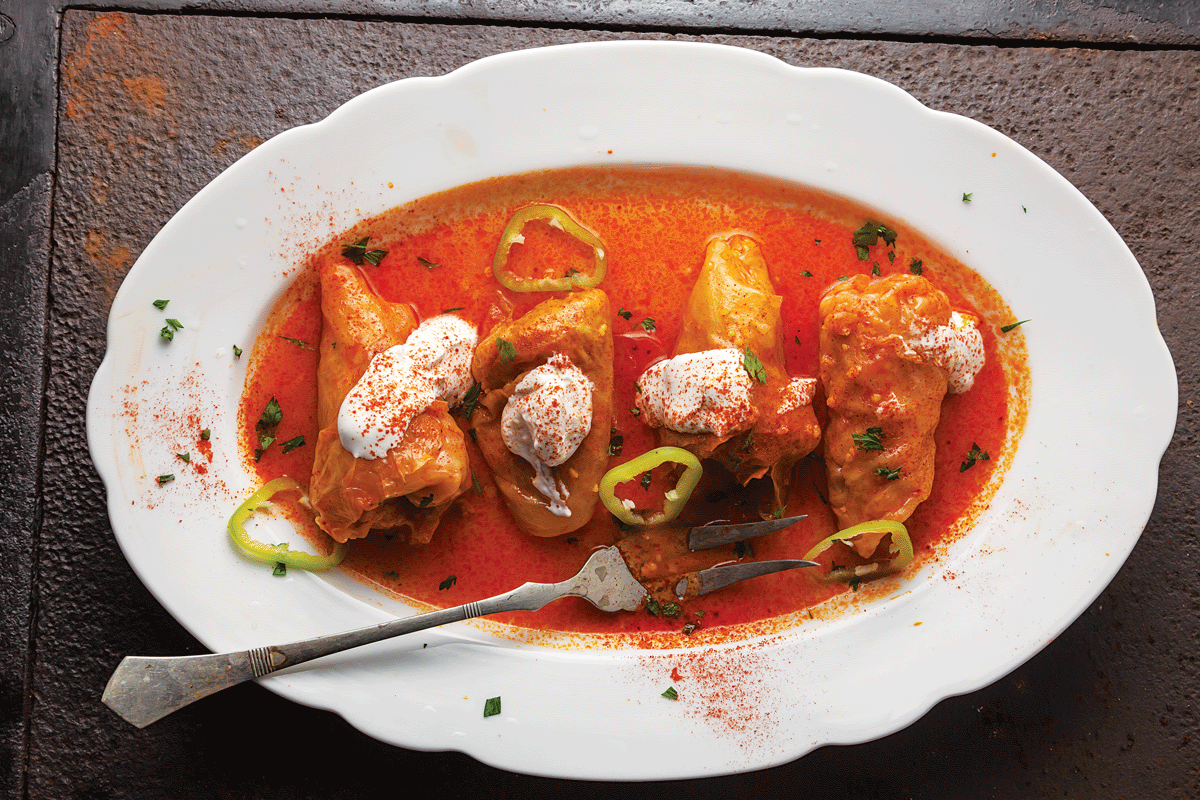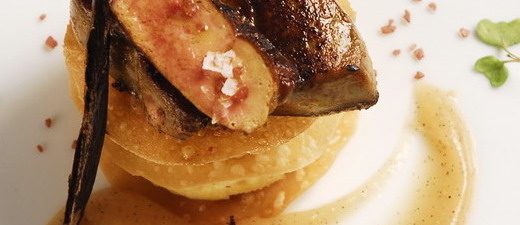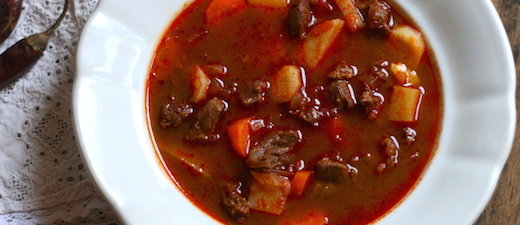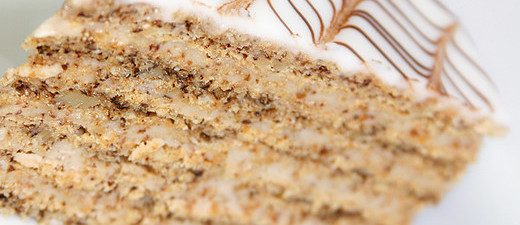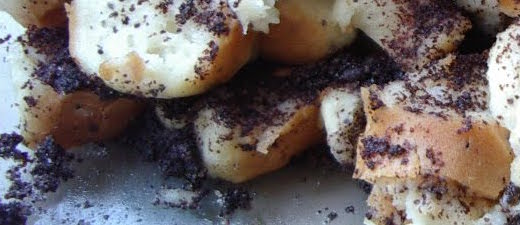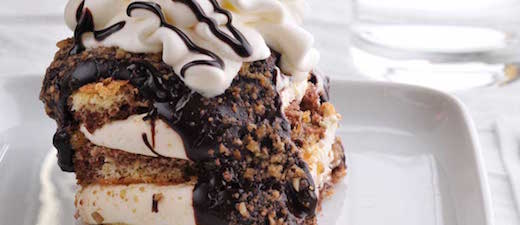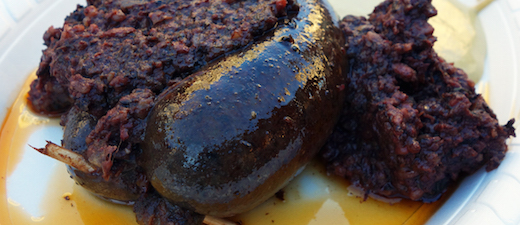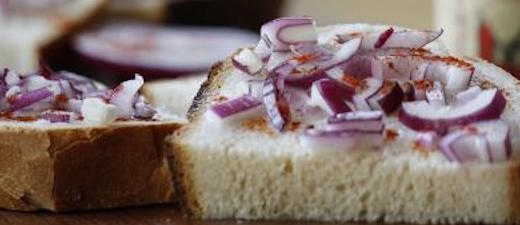The complete Budapest food guide
February 20, 2015 | by Irina | Posted in Europe
I am admittedly a bit biased towards Budapest and Hungary, having lived in the country for half a decade, but I truly do believe it’s one of the best places on earth. One of my main arguments to support my claim is that Hungary has the most amazing food in all the world; and Budapest is the epicenter of it.
Hungarian food boasts what many European cuisines lack: spices, particularly paprika, and lots of it. Without a doubt, the best place to sample real Hungarian food is at a Hungarian grandmother’s home. But if you can’t manage to cajole yourself into one, there are plenty of restaurant options that do the trick. There’s also a whole new breed of chefs in Budapest that are modernizing and re-thinking traditions; making it an especially interesting to dine in the city.
So without any further ado, here’s my complete guide on what your eating itinerary should look like in Budapest:
MAIN COURSE
Hungarian food is traditionally hearty, filling, and absolutely finger licking good. You will definitely feel completely full after, and it will certainly be worth it.
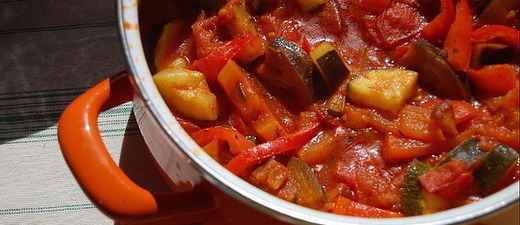
Kacsamáj / libamáj [ka-cha-maj/ leeba-maj] is otherwise known as foie gras. This is one of Hungary’s most prized delicacies: duck or goose liver. Usually served as an appetizer, the kacsamáj in Hungary is prepared in its own fat and is incredibly smooth. Hungarian chefs love playing with all sorts of variations and typically pair it with sweet jams and sauces.
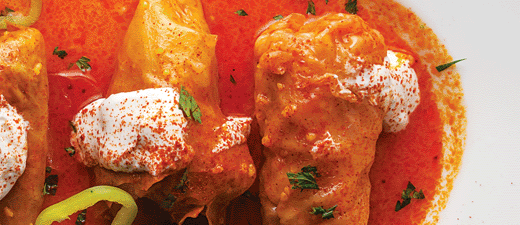
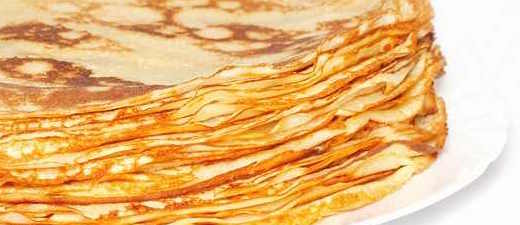
Pörkölt [pour-koul-tt] is the general Hungarian word for a meat stew (beef, pork, lamb or chicken). This dish is made with plenty of paprika, as well as onions, bell peppers and tomatoes. The stew is a dark, deep colored brown; it’s usually served with pasta, nokedli (Hungary’s version of tiny gnocchi) or baked potato. To be completely honest, this is not at all a favorite dish of mine, but it’s a staple so I figured you should know about it too.
Where to get a taste:
Hungarikum Bistro
Located in a central, convenient part of the city, this busy restaurant is reminiscent of many you’ll find outside of the capital- time hasn’t really moved too much. And in the case of Hungarikum Bistro that’s a good thing- come here to get a taste of the classics before you explore more creative, modern variations.
Vár: Speiz Restaurant
I’m struggling deciding if this adorable place should be considered classic or modern, as their menu is about 50/50. The atmosphere here is great, the location can’t be beat (a few steps from Fishermans Bastion) and the food is really quite amazing.
Vendéglő a KisBíróhoz
This place is an institution in Budapest tucked away in the ritzy hills of Buda. Expect relatively high prices, a wonderful experience and Hungarian classics slightly modernized. Also a great wine selection.
Divin Porcello
A trendy, comfortable cafe-esque ham bar featuring ham not only from Hungary (but you should stick to those) and some really great wines.
SOUPS
Hungarians take their soup very seriously, so make sure not to skip this portion of the menu. Here are the main players you should definitely plan on trying:
Húsleves [hoosh-levesh] is basically a meat broth soup, a staple in every family home for Sunday lunch, this is Hungary’s version of macaroni and cheese. A pot of rich broth is made by simmering meat and bones (usually chicken, but often beef, goose, and etc), fresh vegetables (each family has a signature mixture of vegetables that they prefer) and spices. Every Hungarian loves to claim that his/ her mom’s Húsleves is the best there ever was. Especially try Újházi husleves. Look for gazdagon with all the fixings.
Gulyás [gu-yaash] is most likely the only Hungarian dish you had heard of prior to reading this post, Gulyás is a simple paprika- filled beef soup. The beef is accompanied by a few other veggies and potatoes, and it’s usually quite hearty and eaten with fresh bread.
Halászlé [ha-laas-lej] is fish soup, or Fisherman’s soup; I insist that this is best soup in all the Hungarian land. It’s a hot, spicy paprika based river fish soup (Hungary has no access to seas or oceans). Some argue that it is one of the hottest dishes original to the European continent, and I might agree, but it’s not simply spicy- its rich flavor and gentle, soft fish make it a must-eat.
DESSERTS
Forget the French. Nobody on this beautiful, huge earth does dessert better than the Hungarians. This is the real reason that yours truly gained quite a few pounds while happily eating my way through every dessert and pastry shop.
Eszterházi torta [ester-haazi tor-ta] is a very famous cake layered with spiced buttercream, sandwiched between walnut dough. It is glazed with a fondant glaze and decorated in a striped pattern. You can get it by the slice mostly anywhere.
Mákos guba [maa-kosh goo-ba} is every child’s favorite dessert- it’s basically a bread pudding: stale bread is cut up and covered with milk (or pudding), sugar, raisins and lots of poppy seeds.
Kürtöskalács [koor-tosh ka-laach] hails from the area of Hungary that is now in Romania, Kürtöskalács is a sweet, raised dough which is rolled into a strip and wrapped around a cone shaped baking spit. When it is done baking on an open fire, it is topped with granulated sugar, or your choice of cacao powder, cinnamon, shredded coconut or ground walnut. You won’t find Kürtöskalács in restaurants and cafés though; instead, look for street vendors with long lines all over the city.
Pogácsa [po-gaa-cha] is a kind of biscuit made with leaved dough and a touch of cheese, you’ll find these in most supermarkets or look for the Fornetti chain that is everywhere in the city. These make for a quick, delicious savory snack. Make sure they are fresh and warm- pogacsa is best right out of the oven!
Somlói galuska [shom-lo-ee ga-lush-ka] a decadent dessert which is a classic on most menus- made of a sponge cake with three layers, traditionally scooped into three balls and topped with raisins, walnuts, chocolate sauce and whipped cream. To die for.
Where to get a taste:
Daubner
Cakes and lots of sugary deliciousness as far as the eye can see- Dauber has been a favorite for over a century now. Come here to taste the best.
Belvárosi Auguszt
This classic owned by one of the oldest Hungarian pastry-family dynasties. They now have three locations in town but you definitely want to check out the one in the center. Traditional and classy and delicious.
Asztalka
Considered one of the best new wave pastry shops in the city, this place is decked out in antique furniture and you’ll definitely want to linger a while with your treats. Though its atmosphere is definitely reminiscent of the days of old, their desserts take a unique spin on Hungarian pastry tradition.
Deszert.Neked
This dessert shop’s tagline translates to “the dessert workshop”; come here for everything that is cutting edge in the current Hungarian desserts world; your mind will be blown by the textures, colors and flavors.
AT THE MARKET
You know me, I’m always a big advocate for visiting local markets wherever your travels take you, and this definitely rings true in Budapest. Head to the Central Market Hall (Nagy Vásárcsarnok), a restored neogothic hall which is the largest and oldest indoor market in the city. A plethora of sights and smells fill the hall; it’s a great place to wander around lunchtime. Make sure to try some of the foods below at the market (or at any other street vendors around town)
Hurka kolbász [hoor-ka kol-baas] is blood sausage made with blood, rice, onions, liver and other organs and typically boiled before serving, this sausage boasts a deep, dark color and is shockingly good. In fact, it’s so good that my dad used to ask me to sneak these into the US for him.
Lángos [laan-gosh] is so bad for any semblance of a diet that you might have but so so so good- langos is a deep fried flat bread usually topped with sour cream, shredded cheese and garlic.
Szalonna [sa-lo-nna] is one is very hard to translate or explain- literally, it’s back bacon. But unlike bacon, there’s no actual meat in szalonna. It’s 100% fat, and it’s actually delicious. It is typically sold smoked or cooked in some way and is ready to eat.
Zsíros kenyér [jee-rosh ke-nyer] (literally translates to greasy bread) is a favorite summer food of Hungarians- made by cutting szalonna into cubes, spearing it and roasting it on an open fire. Once it starts to sizzle and the fat starts to drip, the szalonna is removed from the fire and the fat is dripped onto fresh, white bread. Often red onion, peppers, radishes, salt and paprika are added to the fatty slices of bread before eating.
I’m telling you: sprint, don’t run, to this majestic food capital. And also keep your eyes peeled for Budapest drink guide; coming soon!
Logistically speaking
Tipping usually customary to leave around 10%, but now many restaurants in Budapest automatically add gratuity, so double check before tipping
Hungarikum bistro open daily 11.30 – 23.00. Make sure to reserve in advance as this place is often packed, View menu. Located on central Pest side: Steindl Imre u. 13 Budapest 1051.
Vár: Speiz Restaurant open daily 12.00 – 23.00. Generally no need for reservations but definitely call ahead for big groups +36 1 488-7416. View menu. Located in castle district behind the Hilton: Hess András tér 6, 1014 Budapest,
Vendéglő a KisBíróhoz closed Mondays, open Tuesday- Sunday 12.00 – 23.00. Recommended to reserve in advance +36 1 376 60 44 or [email protected]. View menu.You’ll definitely want to take a cab, off the beaten path: Szarvas Gábor út 8, 1125 Budapest.
Divin Porcello open Monday – Friday 7.00 – 24.00, Saturday and Sunday 12.00 – 24.00. View selected images of menu options. Located on Buda side next to Danube river: Apáczai Csere János u. 7, 1051 Budapest
Daubner Open daily 9.00 – 19.00. Located near Margit Island Szépvölgyi út 50, 1025 Budapest
Belvárosi Auguszt open Monday- Friday 9.00- 19.00, Saturday 11.00 – 18.00, closed Sunday. View the selection. Located in central Pest: Kossuth Lajos u. 14-16., 1053 Budapest
Asztalka closed Monday and Tuesday, open all other days of the week 11.00 – 19.00. On Buda side near river, enterance through Attila Ut: Döbrentei utca 15, 1013 Budapest
Deszert.Neked open Monday- Friday 11.00 – 21.00, Saturday- Sunday 10.00- 21.00. Website (Hungarian only), English write up. Near the Opera House on the Pest side: Paulay Ede u. 17 1061 Budapest
Central Market Hall (Nagy Vásárcsarnok) open Monday- Friday 6.00- 18.00, Saturday 6.00- 15.00, closed Sunday and all public holidays. Schedule of special events at the market. On Pest side right on river accross from Citadel: Budapest, Vámház krt. 1-3, 1093 Budapest

